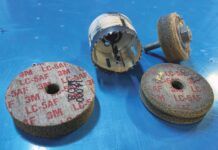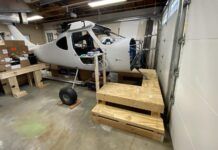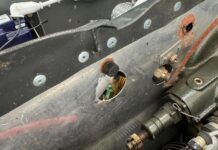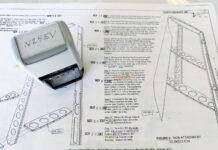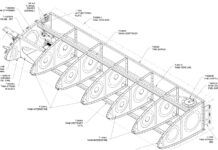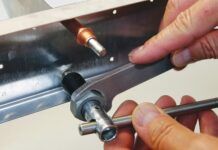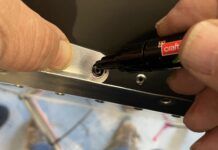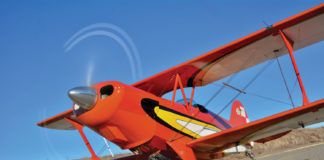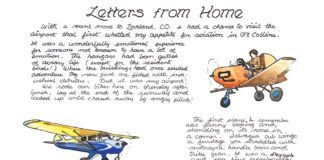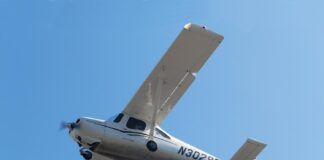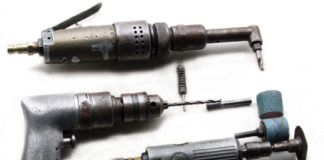I was assembling the ailerons for my RV-7A and reached a point where I needed to rivet the leading and trailing edge skins to the top of the spar. The manual gets really brief at this stage, and this is one of those steps that caused me to do some head-scratching. I’m sure there might be another way to accomplish this task, but I thought this solution was pretty creative and it worked for me.
What makes this task difficult is that you have to reach through the folded trailing-edge skin with the bucking bar. Unfortunately, the aileron jig I built is useless here because you have to splay open the folded skin to get a hand in there. Resting the aileron on the bench meant driving with the gun from either the top or bottom while trying to keep a bar in the right spot. Bad juju.
After stressing for an hour or so, I came up with this: Earlier in the project, I built a wooden bending brake to squeeze the aileron trailing edges. I repurposed the brake as a fixture to hold the aileron during riveting.

The bending brake is held open by a 2×4-inch block inserted into each end of the brake. Particle-board shelving is clamped on top of the brake to provide a smooth surface for the aileron.
A 2×4-inch block was inserted into each end of the brake to hold it open at an angle. I used C-clamps to hold the brake to the bench. Next, a 12×60-inch section of particle-board shelving was clamped on top of the brake to provide a smooth surface. Finally, I fabricated two clamps from scrap aluminum (one for each end of the aileron) to hold the trailing edge in place and keep things from bending while I reached inside with the bucking bar.
Turning the bending brake into an angled work surface made it much easier to hold the gun and the bar. A short time later, the skins were riveted to the top of the spar, and I was ready to move on to the next step of the build.
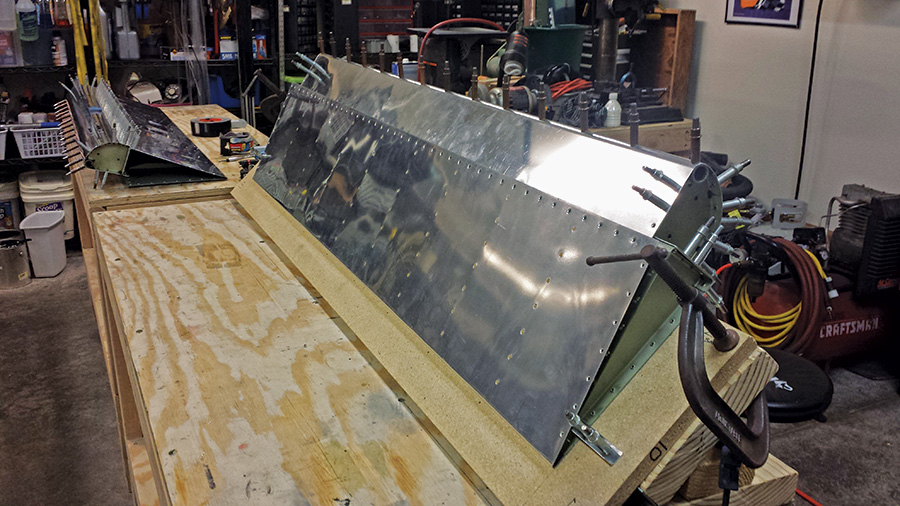
A clamp made from scrap aluminum holds the trailing edge of the aileron in place. Clecoes attach the clamp to particle-board shelving, which is clamped to the top of the bending brake.


